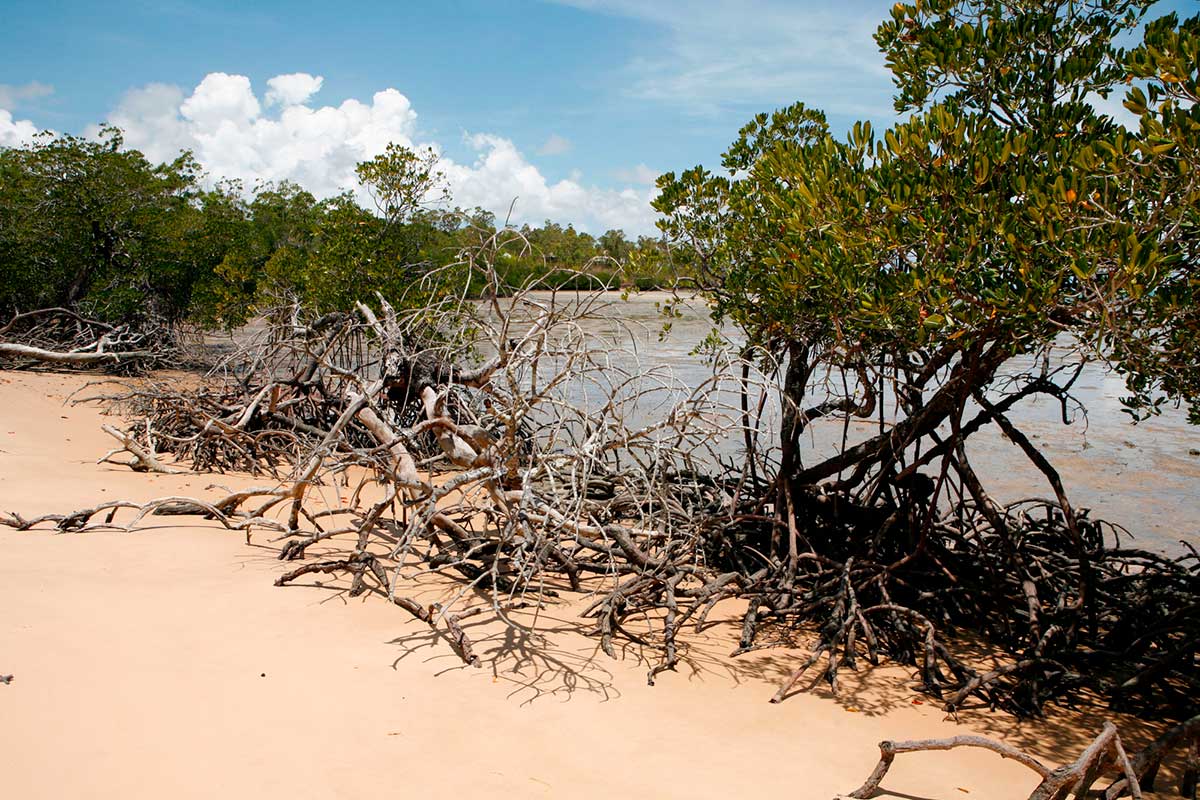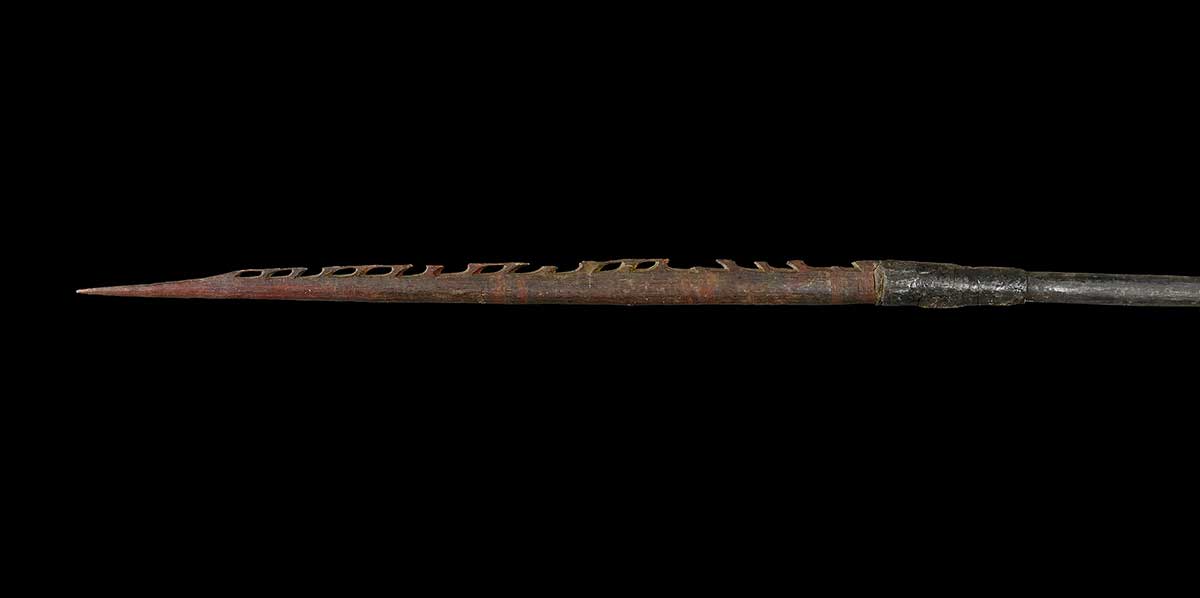Makassar bound
Laklak Burarrwanga, Yolngu elder, 2008:
Long time ago, when the north-east wind blew, the Mangatharra [Makasar] would travel from their place up north in Indonesia to Arnhem Land. They came in Macassan boats called praus. They planted tamarind trees and traded with Aboriginal people. The Aboriginal people, they traded the trepang ... and the Mangatharra traded knives and material.
Through the trading connections between the Makasar and the people of Arnhem Land, Yolngu objects entered new networks and new worlds. When naturalist Carl Alfred Bock visited Makassar in 1879 he observed:
Carl Alfred Bock, The Head Hunters of Borneo, 1882:
The principle street [of Makassar] ... runs along the beach for more than two miles. Beginning at the southern end are a row of white-washed brick stores, mostly belonging to Chinese traders. Spread out in front of the premises ... many hundredweight of trepang ... which are being dried out in the sun previous to shipment.
While in Makassar, Bock acquired three spears (one of which is pictured below). For many years they were thought to have been made in Makassar, until research in the 1950s identified them as Yolngu.
Old objects
Norwegian naturalist Carl Alfred Bock travelled to Indonesia in 1879. He stopped briefly at Pare-Pare, north of Makassar, where he bargained with locals for some lances and knives. He probably also bought these distinctively Yolngu spears, which were among a large collection the British Museum purchased from Bock in 1880.
Cultural exchanges between Yolngu people and the trepang traders sometimes involved Yolngu people accompanying the Makasar on their return voyage home. In the 1940s, Yolngu man Djaladjari told of his trip there, via the island of Timor, as a young boy in the 1890s.
Daladjari, quoted in RM & CH Berndt, Arnhem Land: Its History and its People, 1954:
It was on Leti [Island] that we saw balanda [Europeans] for the first time ... We walked about the town with its houses, just the same as Darwin, and there were coconut trees too.

